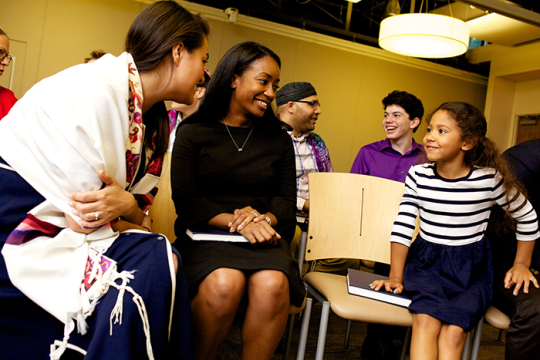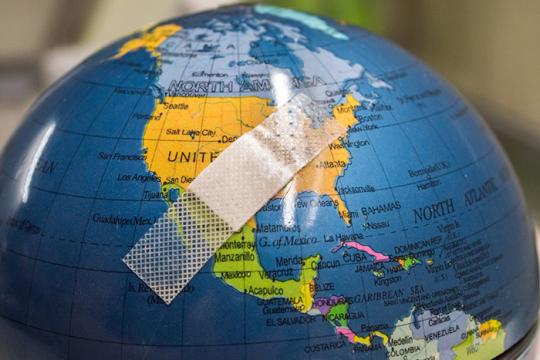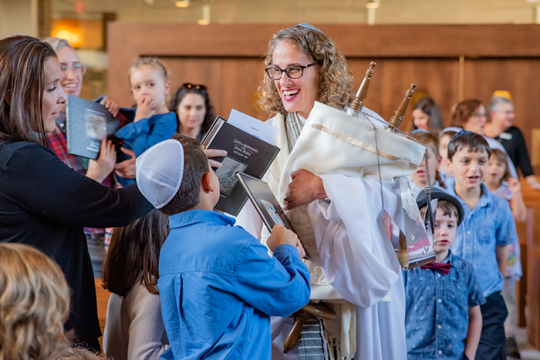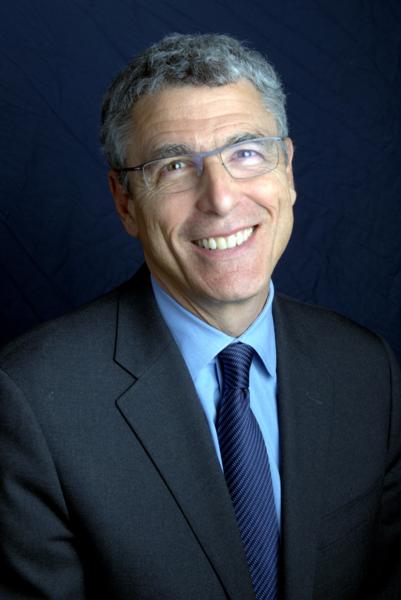
As congregational leaders, you may find that the month of Elul and the High Holidays fly by in a whirl of logistical details – arranging for tickets, ensuring enough chairs, assigning aliyot, planning the community’s break-the-fast – necessary to ensure meaningful worship for members and visitors alike. That is indeed holy work.
In your role, it is all too easy to get caught up in the “to-do mode.” Often, we fail to devote adequate time and attention to cheshbon ha’nefesh (accounting of the soul) – the act of taking stock of the spiritual health of both ourselves as individuals and our congregations.
Adult education sessions, board discussions, and/or Selichot programming and worship are among the varied ways you and your fellow lay and professional leaders can perform this communal stock-taking. These practices can help to identify community-wide qualities to celebrate, as well as challenges for which the congregation might wish to explore improvements or solutions to implement in the coming year.
But we must not forget to take care of ourselves spiritually, too, just as we do physically.Undertaking the sacred endeavor to bring yourself to a place of personal spiritual readiness for the High Holidays, as well as to continue that assessment throughout the Days of Awe, is a demanding and equally important task, especially as a congregational leader.
Marge Piercy writes eloquently about cheshbon ha’ nefesh in her poem “Coming up on September,” which says, in part:
The New Year is a great door
that stands across the evening and Yom
Kippur is the second door. Between them
are song and silence, stone and clay pot
to be filled from within myself.I will find there both ripeness and rot,
what I have done and undone,
what I must let go with the waning days
and what I must take in. With the last
tomatoes, we harvest the fruit of our lives.
Just as ripe tomatoes are associated with late summer, pomegranates – rich in Jewish symbolism – often are linked to Rosh HaShanah, and incorporated into families’ holiday celebrations, particularly among the Sephardim. Images of pomegranates adorned the high priests’ robes in Temple times, as well as columns in King Solomon’s temple. In addition, the Hebrew word for pomegranate is rimon, which is the same as for the crowns that decorate many Torah scrolls, which contain our people’s story and guide our actions throughout the year. Today, the fruit’s many seeds are a sign of our hopes for abundant blessings and mitzvot in our midst during the new year.
As you continue to prepare your congregations and yourselves for the High Holiday season, may you take to heart the words of Rav Abraham Isaac Kook – “The old shall be renewed and the new shall be made holy” – finding meaning, fulfillment, renewal, and holiness in each of the important endeavors associated with the High Holiday season.
Having a pomegranate on our Rosh HaShanah tables might be something brand new for some of us, signaling that our spiritual growth can arise from both ancient and contemporary sources. Inspired by Rav Kook’s teaching will we be ready to consecrate new liturgical practices, new machzorim (High Holiday prayer books), new clergy and new congregational experiments – while at the very same moment finding new meaning in the familiar practices that might otherwise be performed by rote?
Just as the pomegranate overflows with seeds, may 5776, too, find you, your loved ones, and your congregational family overflowing with blessings, mitzvot, and the joys of Jewish living.
Shanah tovah um’tukah!
Related Posts

Digital Resources for a Sweet 5784

Repent, Repair, Renew

